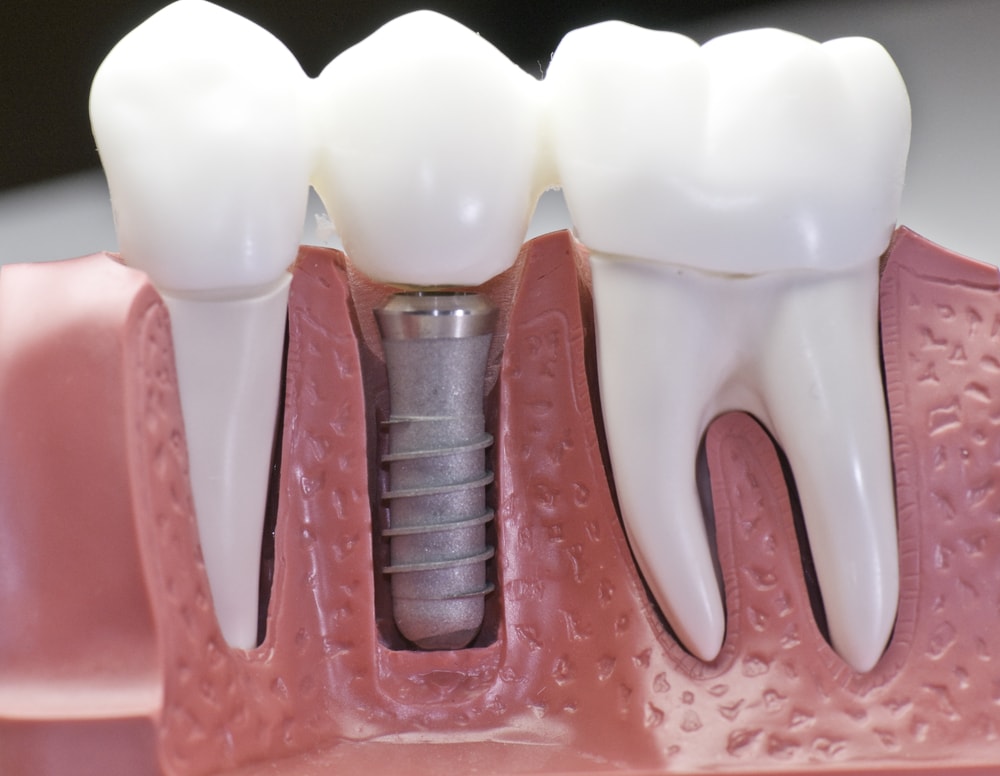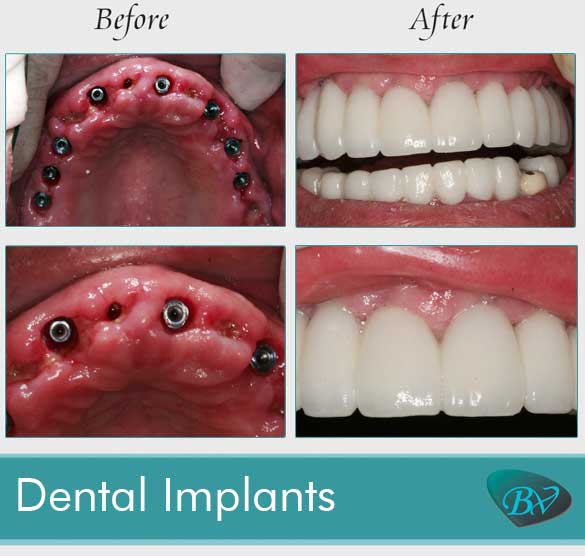Dental Sense - Truths
Wiki Article
What Does Dental Sense Do?
Table of ContentsThe Best Strategy To Use For Dental Sense6 Simple Techniques For Dental SenseDental Sense Fundamentals ExplainedLittle Known Questions About Dental Sense.
are clinical tools operatively implanted right into the jaw to recover an individual's ability to chew or their look. They supply assistance for fabricated (phony) teeth, such as crowns, bridges, or dentures. When a tooth is lost due to injury or disease, a person can experience complications such as quick bone loss, defective speech, or changes to chewing patterns that result in pain.Dental implant systems contain an oral implant body and oral implant abutment and may also consist of a joint fixation screw. Dental implants. The dental implant body is surgically placed in the jawbone in area of the tooth's root. The oral implant joint is typically affixed to the implant body by the joint addiction screw and prolongs through gum tissues right into the mouth to support the connected fabricated teeth
(https://slides.com/dentalsense1)Structure of The Dental Implant System selecting dental implants, talk with your oral provider regarding the possible advantages and dangers, and whether you are a candidate for the treatment. Points to take into consideration: Your general health is an essential consider figuring out whether you are a good candidate for oral implants, the length of time it will certainly require to recover, and the length of time the implant may stay in location.
Smoking might affect the healing process and decrease the long-term success of the implant. The recovery procedure for the implant body might take numerous months or longer, throughout which time you typically have a short-lived joint in location of the tooth. the dental implant treatment: Meticulously comply with the oral health instructions provided to you by your dental provider.
About Dental Sense
Implant failure can cause the demand for one more procedure to take care of or change the implant system. Recovers the capability to eat Restores aesthetic appearance Assists maintain the jawbone from diminishing due to bone loss Protects the wellness of the bordering bone and gums Helps keep adjacent (nearby) teeth stable Boosts lifestyle Damage to surrounding all-natural teeth throughout dental implant positioning Injury to the surrounding tissues throughout surgical treatment, such as sinus opening Injury throughout surgical procedure (as an example, crack of bordering jawbone) Poor feature, such as really feeling like the teeth do not bite with each other typically A feeling that the tooth is loosened or turning in position arising from a joint screw loosening Implant body failing (looseness of the implant body) because of systemic infection, which might be most likely in individuals with unchecked diabetes due to regional infection in bone and gums supporting the implant body because of delayed healing, which may be most likely in clients that smoke Problem cleansing the gums around the implant, resulting in inadequate oral hygiene Without treatment gum condition Post-surgical numbness due to nerve impingement or damages Always notify health treatment service providers and imaging service technicians that you have dental implants prior to any magnetic vibration imaging (MRI) or x-ray treatments.FDA is not familiar with any unfavorable events reported for MRI or x-ray treatments with oral implants. Dental implants systems are normally constructed from products that comply with international agreement criteria of the International Organization for Standardization (ISO) or ASTM International. These criteria have information of what makes a safe material.

An oral implant is a framework that replaces a missing out on tooth. With screw-like tools, the doctor inserts a dental implant right into the jawbone, and it acts as an anchor for a man-made tooth, called a crown. A device called a joint connects the fabricated tooth to the dental implant. The crown is tailor-made to fit the person's mouth and match the color of their teeth.
Facts About Dental Sense Revealed
Some individuals are not qualified for oral implant surgery. It is for dental surgeons to operate individuals with: severe illnessuncontrollable metabolic diseasebone or soft cells condition or infectionIf these issues are solved, an individual can have the surgical treatment. In, dental specialists refrain from operating individuals with: If people with any of the above go through oral implant surgical treatment, there is a greater danger of the implant failing.
Oral dental implant surgical procedure is an individualized procedure. It's not the exact same for every person. The complying with gives a general summary of what you can anticipate your dentist, oral doctor, periodontist or prosthodontist to do: Place the implant surgically. Offer you time to recover. Attach the message and final crown, bridge or denture.
Next, your surgeon will carefully place the dental implant into your jaw. If your implant is near the front of your mouth, your dental professional will make a short-term tooth for you to wear till you heal.
The Basic Principles Of Dental Sense
Throughout the healing stage, your jawbone should fuse to the oral implant. This process can take anywhere from 3 to nine months.Once your dental implant heals, your dentist can affix the joint (tiny connector blog post) and your last repair (crown, bridge or denture). This normally takes about one hour to complete and might need a second small surgical treatment. You should not feel any pain throughout your oral implant procedure due to the fact that your copyright will use medication to numb your gum tissues.
Report this wiki page